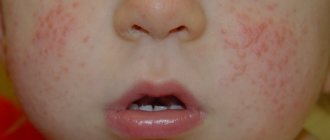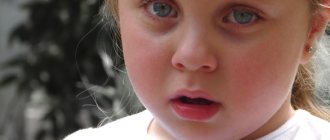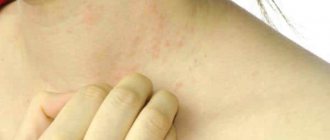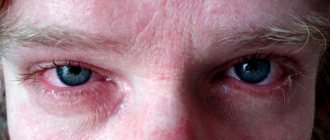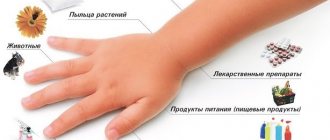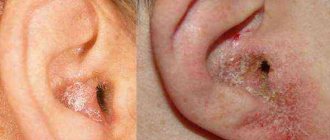Atopic dermatitis in children is a disease the occurrence of which is provoked by various allergens. The famous doctor Komarovsky recommends starting the treatment of this disease by identifying the substance that is an allergen and provokes the symptoms of the disease. Quite often, this doctor appears on television programs and gives parents advice on how to ensure effective treatment and care for their child during the course of this disease. He often reminds us that spontaneously prescribing medications to a child can have a negative impact on health.
A very common occurrence among infants, as well as children of primary preschool age, are illnesses that were triggered by allergens. According to the doctor, the main reason that provokes their occurrence is that the child’s immune system is immature, so it is not able to fully protect the child’s body from exposure to allergens.
What is atopic dermatitis?
By atopic dermatitis, experts understand a skin disease that is recurrent in nature and occurs in a chronic form . Its appearance most often occurs under the influence of external and internal stimuli. Several terms are used in the medical literature to describe this disease. It is called neurodermatitis or atopic eczema . The name infantile eczema is also often mentioned.
Internal disorders in the child’s body trigger the development of this skin disease. If the baby has increased sensitivity or the cells of the immune system have not yet matured, then the child’s body is simply not able to resist various allergens. In most cases, atopic dermatitis occurs in children between 6 months and 2 years of age .
Children with a genetic predisposition to this skin disease are also at risk. There is a high probability of this disease occurring in children who are introduced to complementary foods or are given artificial feeding.
According to Dr. Komarovsky, children who are breastfed are less likely to develop this disease and other types of allergies. In other words, babies who are fed formula are less protected from atopic dermatitis. Heredity is of great importance in the occurrence of this disease. If at least one of the parents suffered from atopic dermatitis in childhood, then the probability that the disease will manifest itself in the child is 65%.
In order for the treatment of this disease to be effective and lead to a positive result, the first thing that needs to be done is to identify the allergen or factor that triggered the symptoms of this skin disease. If the first cause of inflammation of the disease is eliminated, then this significantly increases the effectiveness of treatment, which in most cases ends quite successfully.
Diagnostics
Usually, additional examinations are ordered by an allergist-immunologist. If your child shows the first signs of the disease, you should definitely show him to a specialist. Newly diagnosed atopic dermatitis requires additional research.
General blood analysis
It allows you to accurately and quickly establish the allergic form of the disease, as well as distinguish atopic dermatitis from various infectious diseases. A marked increase in the level of leukocytes and eosinophils indicates the presence of an allergic reaction. Almost all variants of atopic dermatitis occur with accelerated ESR.
In the midst of the acute stage of the disease, there may be a slight increase in lymphocyte levels. This indicates the activation of the cellular immune system and the onset of an allergic reaction. Also, leukocyte counts will tell the doctor whether there is a secondary bacterial infection or complications of the disease.
They are not informative for infants. Studies involving scarification tests are recommended only for children from the age of three. Carrying out such studies in infants is not informative and does not provide accurate, reliable results.
It is used in children with severe disease. Doctors usually recommend performing such tests in older children. However, with frequent exacerbations of the disease, when clarification of the allergen is required, serological tests are also used in infants. The material to be analyzed is venous blood. When performing this laboratory test, several groups of allergens can be tested at once. The analysis period is usually 3-4 days.
With the help of such a test, the doctor can give the most accurate recommendations about what provoking factors cause manifestations of atopic dermatitis in the baby. This study also allows you to identify all cross allergens. A significant disadvantage of such an analysis is its high cost. For each group of allergens you will need to pay about 5,000 rubles.
Causes of atopic dermatitis in infants
the immaturity of the cells of the immune system, as well as the liver and intestines, as the main reason for the appearance of this disease . The doctor gives as an example that when any of the allergens appears in the child’s body, the important internal organs that are responsible for this are simply not able to completely process it. As a result, it gradually accumulates in the body, which is ultimately expressed as a reaction appearing on the skin. If we look at medical statistics, then, according to them, food allergens are the main cause of atopic dermatitis in 40% of cases.
They are products that the mother or child consumed during lactation when complementary foods were introduced to him. The most common food allergens are eggs and nuts , as well as milk and certain types of meat . In addition, a child may develop an allergic reaction due to food dyes , citrus fruits or berries . There are other reasons that can also contribute to the development of atopic dermatitis. Among them, the following are particularly common:
- artificial feeding of a child;
- heredity;
- overheating of the baby;
- substances of a chemical nature, as well as household detergents with which the child came into contact;
- wearing clothes made from rough fabrics;
- the child is overweight;
- the presence in the baby’s body at birth of an increased level of bilirubin;
- certain gastrointestinal diseases.
In some cases, not only for parents, but even for an experienced doctor, it seems quite a difficult task to determine the cause that provoked the occurrence of atopic dermatitis. In these cases, treatment is symptomatic. When the nature of the disease is unknown, parents should pay special attention to their child. They must exclude the child from contact with food and factors that may act as allergens.
Definition of eczema
Eczema is a chronic disease with pronounced systematic periods of relapse. Externally it manifests itself as a papular rash, flowing into the mass formation of watery blisters with clear or cloudy serous fluid. Bubbles can merge into extensive conglomerates. During the period of maturation of papules, liquid flows out (similar to boiling water, hence the name), and in this place erosions are formed, covered with scaly epithelium. In the absence of necessary treatment, dermatological formations can crack, become wet, and bleed. Over time, the affected areas of the skin expand, forming large, weeping eczemas. Foci of inflammation bother a person with severe itching. Especially at night.
Signs of childhood atopic dermatitis
The clinical picture of the emerging disease is quite pronounced and is manifested mainly by the appearance of a rash on the skin . At the initial stage of the disease, the first rash appears on the cheeks . Then it spreads to other parts of the body: torso, groin area, neck , and flexor surfaces . Atopic dermatitis is determined by rashes that have a red tint and are quite small in size.
However, during the treatment of the disease, they can gradually merge into a large focus of inflammation. Weeping rashes can appear in the groin area, as well as on the buttocks and in places of the flexor surfaces. The skin in these places sweats quite often, which provokes an increase in the inflammatory process and the number of rashes.
Rashes are the main symptom of this disease, however, they are far from the only one. Other symptoms that are most pronounced during the course of this disease are the following:
- severe skin itching;
- burning and peeling of the skin;
- the child’s lack of appetite, against the background of which he does not gain weight;
- restlessness during sleep;
- increase in body temperature to 37.5 degrees.
When a skin disease develops, elements of the rash may remain on the child’s body for several days. Sometimes the rash disappears suddenly. However, several days pass, and it appears on the child’s body with renewed vigor. Quite often, the rashes that appear on the child’s body are weeping. However, after a few days they dry out. The result is dry crusts that are very itchy.
When they are scratched, a path is opened for the penetration of bacteria, which through their activity can provoke the appearance of pustular rashes. In order to minimize the risk of complications, as well as reduce the symptoms inherent in this disease, treatment should be carried out in a timely manner. It consists not only in using medications and following a certain diet, but also in providing the baby who suffers from atopic dermatitis with proper care.
Prevention
You can avoid allergies if you follow a few recommendations:
- Increased sweating during the hot season leads to irritation of the skin in the chest area. To keep your body clean, you need to perform water procedures daily.
- Women should be more careful with new cosmetics. If a rash appears, you should immediately stop using the product.
- It is better to avoid wearing underwear made from synthetic materials.
- The lack of vegetables and fruits in the diet leads to a deficiency of vitamins and microelements. Balancing nutrition is the key to normal functioning of the body.
Atopic dermatitis in children: treatment
Komarovsky agrees with his colleagues and states that treating a child for atopic dermatitis is a rather difficult task. When procedures are carried out as part of medical therapy, the primary task is to identify the cause that triggered the occurrence of this disease. If this task has been completed, then the prognosis for treating the disease becomes positive.
Conservative treatment of atopic dermatitis
Komarovsky is of the opinion that the approach to the treatment of atopic dermatitis in infants should be comprehensive. It should be started only after consultation with a pediatrician or allergist.
- If, upon examination of the body of a child who has atopic dermatitis, minor rashes are revealed, then in this case the doctor can limit himself to only prescribing external antiallergic agents.
- He can also prescribe a diet and give advice on proper care of the child’s body.
- If the rashes have spread over most of the body, then this can only indicate that the upcoming treatment of the disease will be quite severe and will last for several weeks.
Treatment with folk remedies
Some parents refuse to use medications and, when treating their child, limit themselves to using traditional medicine, which they use to eliminate atopic dermatitis. They make baths prepared from string, chamomile, calendula and yarrow. These plants are used to prepare baths because they have a wound-healing effect, and, in addition, they have an anti-inflammatory effect.
The use of baths made from these herbs can quickly relieve a child of skin itching, and also significantly reduce inflammation. Doctors have nothing against such treatment, however, they point out that traditional medicine should not be the main treatment during therapy, but used as an auxiliary therapy , which complements the main treatment regimen for atopic dermatitis.
In Dr. Komarovsky’s long-term practice, there were many cases when parents refused treatment for this disease altogether, believing that the child would outgrow the disease. According to the doctor, if this disease is not treated in infancy, then it will subsequently remind itself throughout the child’s life and in adulthood it can develop into such an unpleasant disease as bronchial asthma or other ailments that cannot be eliminated.
Features of "Losterin" products
- Contains not one, but six active ingredients.
- Ease of use. The products are quickly absorbed into the skin.
- Contents of medicinal herbal extracts and natural oils.
- Possibility of using products as often as necessary.
You will find more information about the causes of dermatitis on the chest, as well as the drugs “Losterin” along with photos on our website, where you can also place an order or contact us by phone.
Skin diseases occupy a wide niche among the ailments of modern man. But about 40% of such patients suffer from eczema. Their biggest problem is physical and psychological discomfort from the disease. In addition to the obvious symptoms, people experience emotional stress from not being accepted by society. What is eczema and how to deal with it, read below.
Eczema on the chest itches and causes discomfort
Symptoms
The most characteristic signs of dermatitis in the acute phase are:
- inflammation and redness of the skin
- formation of blisters and other rashes
- burning or itching sensation
In the chronic course of the disease, the inflamed area of the skin most often acquires a bluish tint; the skin on it thickens and becomes denser. With some specific types of dermatitis, patients may experience other symptoms on the chest: peeling of the skin, the appearance of a rash in the form of scales, the formation of areas of necrosis (death of tissue), and the formation of scabs.
Hypoallergenic diet
Foods that can cause allergies should be excluded from the baby’s diet. Infants under one year of age may be sensitive to cow's milk. It is recommended to use hypoallergenic mixtures: Nutramigen, Alfare, Nestle, Pregestimil.
When the disease worsens, the diet for children is strictly followed. Nutritionists recommend, in order not to provoke a neurosis-like state in the baby due to constant prohibitions, to slightly expand the diet without exacerbation.
It is not advisable for a child to use:
- nuts;
- citrus fruits;
- fish, seafood;
- coffee;
- chocolate;
- spices, mayonnaise, mustard;
- tomatoes, red peppers, eggplants;
- milk;
- sausages, sausages;
- mushrooms;
- carbonated drinks;
- strawberries, strawberries;
- pineapples;
- watermelons;
- honey
The diet should be based on the consumption of:
- boiled beef;
- vegetarian soups;
- vegetable and cereal soups;
- olive oil;
- boiled potatoes;
- buckwheat, rice, oatmeal;
- lactic acid products;
- cucumbers;
- parsley, dill;
- baked apples;
- whole grain bread;
- bio-yogurt, cottage cheese, yogurt.
Tea and compotes made from dried fruits are useful.
Clinical researches
The beneficial effects of the products have been proven by clinical studies. The products are recommended by the Union of Pediatricians of Russia. During clinical studies, experts were able to record impressive results.
Cream "La-Cri" for dry skin:
- eliminates dryness and flaking;
- retains the skin's own moisture;
- protects skin from wind and cold.
- moisturizes and nourishes the skin;
- relieves itching and irritation;
- soothes and restores the skin.
Cleansing gel “La-Cri”:
- gently cleanses the skin;
- relieves redness and itching;
- restores and nourishes the skin.
